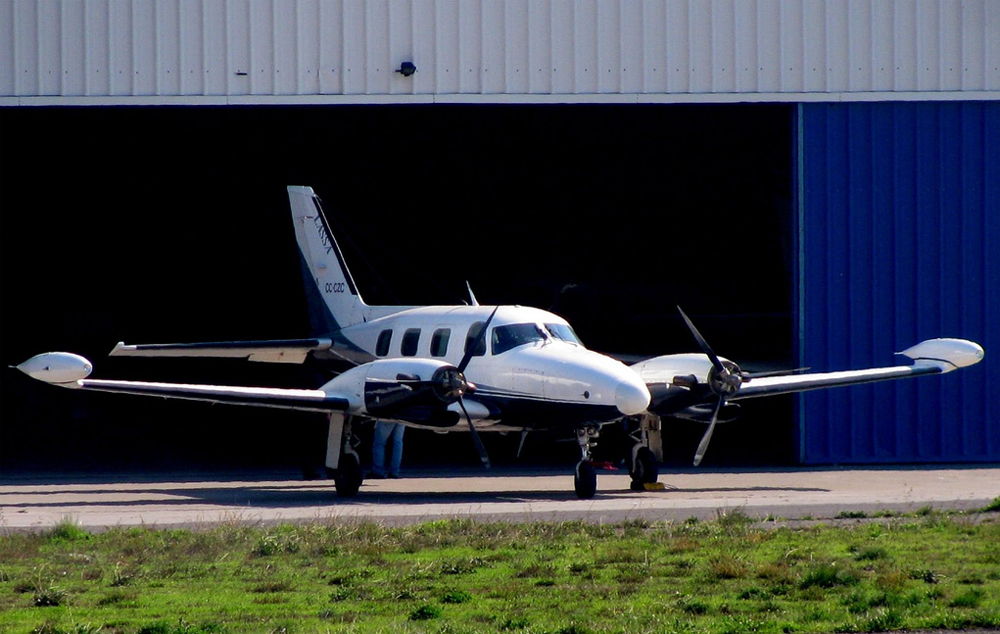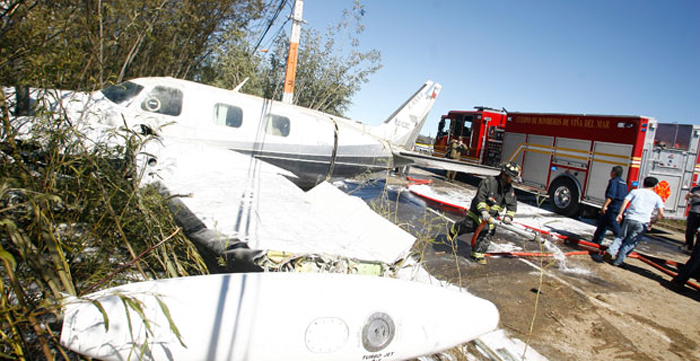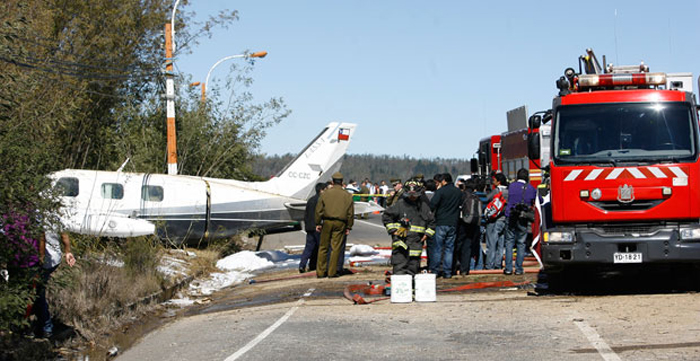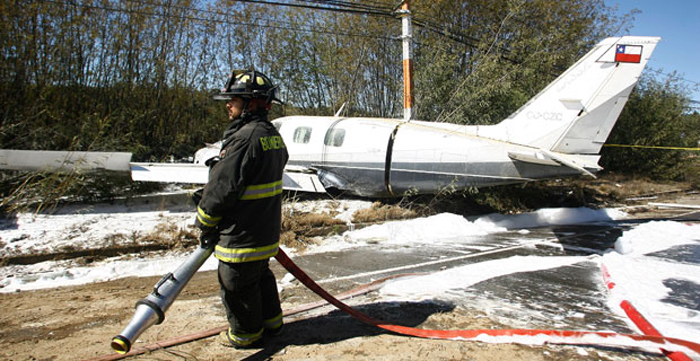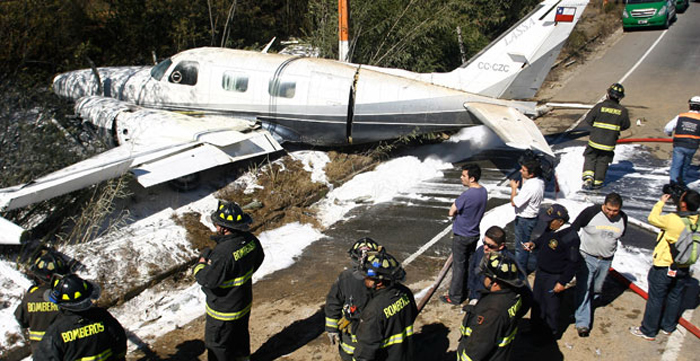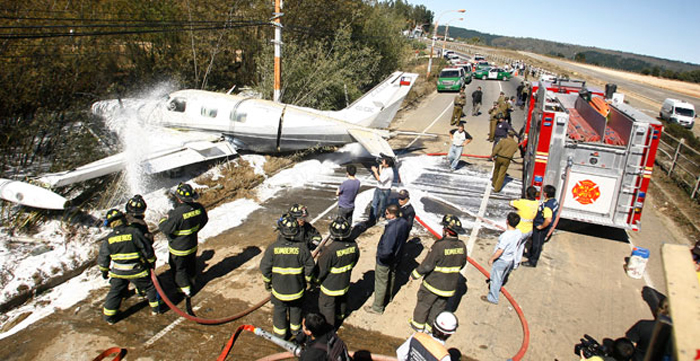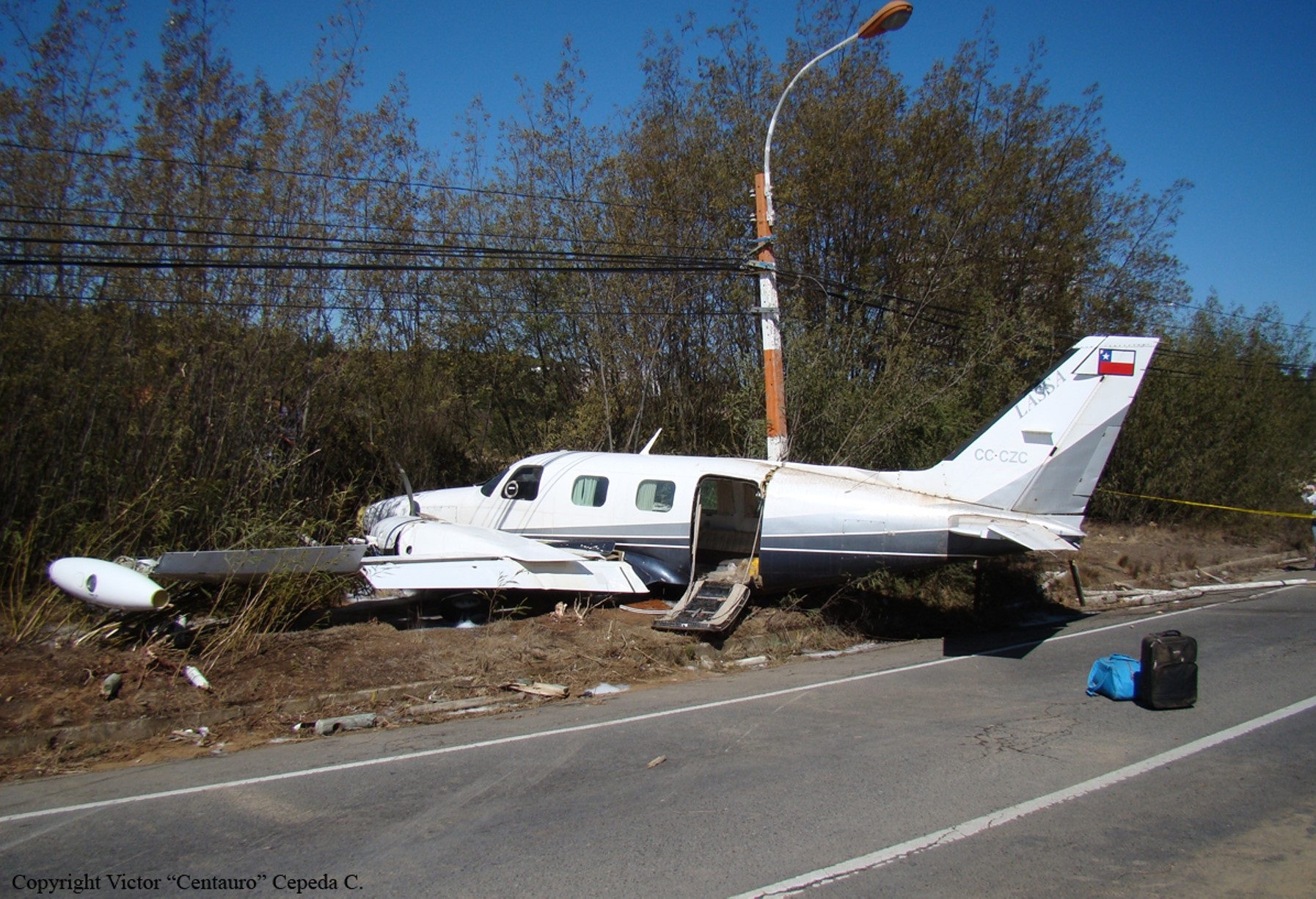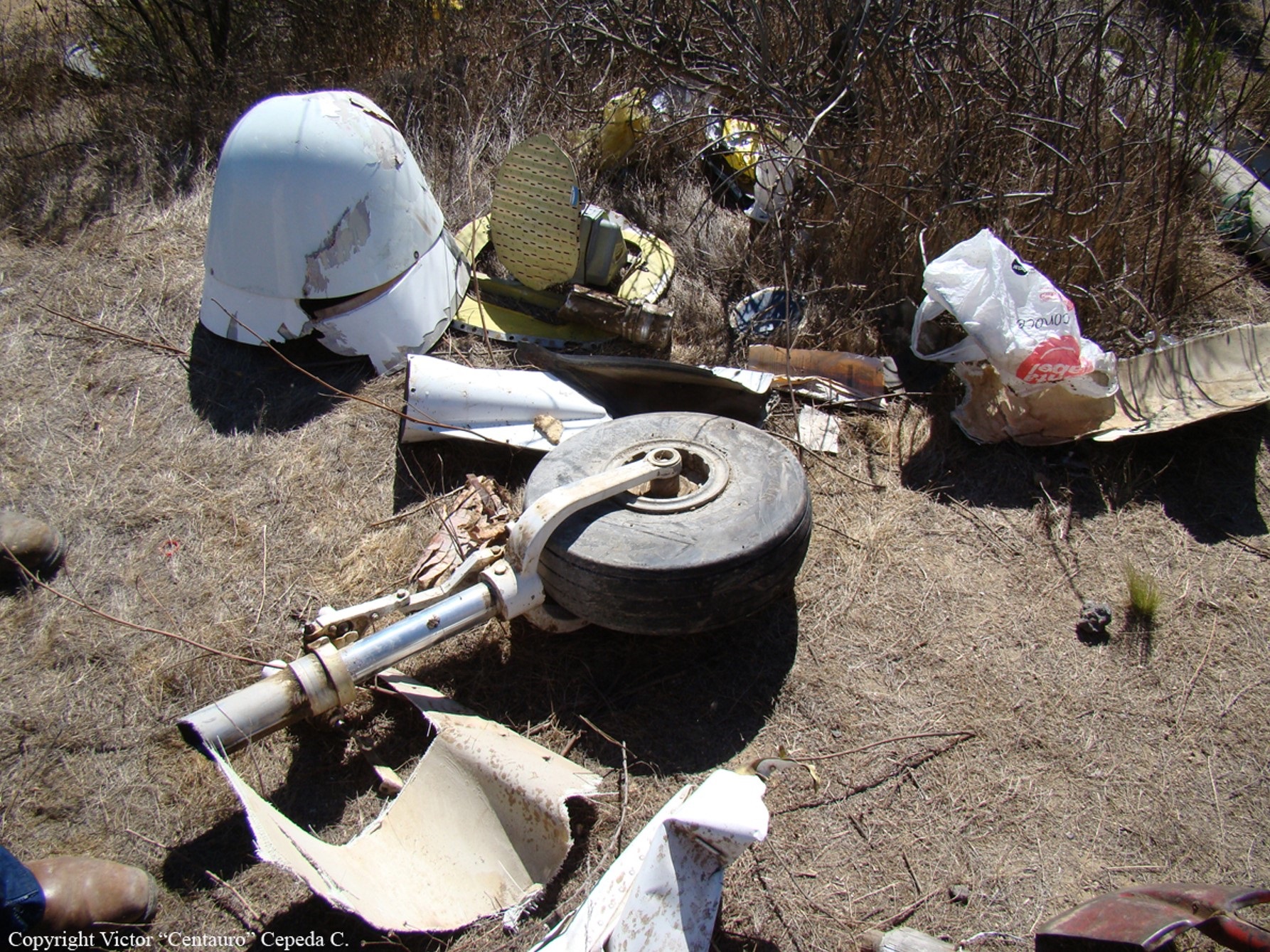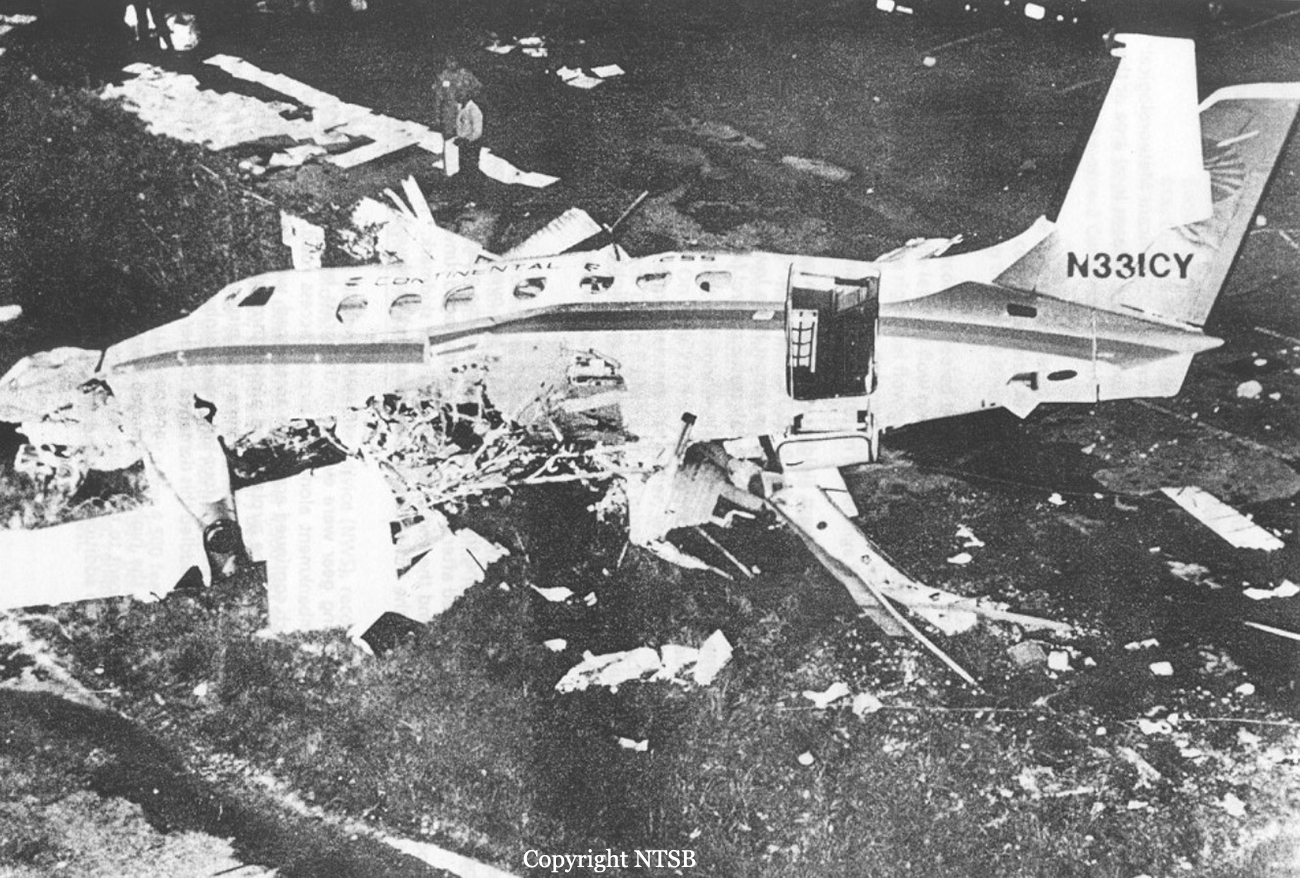Crash of a Piper PA-31T Cheyenne II in Valparaiso
Date & Time:
Apr 15, 2011 at 1200 LT
Registration:
CC-CZC
Survivors:
Yes
Schedule:
Robinson Crusoe Island - Valparaiso
MSN:
31-7920072
YOM:
1979
Crew on board:
1
Crew fatalities:
Pax on board:
1
Pax fatalities:
Other fatalities:
Total fatalities:
0
Captain / Total hours on type:
1092.00
Aircraft flight hours:
7168
Circumstances:
The twin engine aircraft departed Robinson Crusoe Island on a cargo flight to Valparaiso, carrying one passenger, one pilot and a load consisting of 1,000 lbs of lobsters. Upon landing at Valparaiso Airport in good weather conditions, the airplane went out of control, veered off runway, crossed a road and came to rest in a wooded area located along the highway. The aircraft was damaged beyond repair and both occupants escaped with minor injuries.
Probable cause:
The most likely cause of the accident would have been the loss of control of the aircraft when performing the flare, caused by a loss of lift (stall), because the CofG was beyond the rear limit.
The following contributing factors were identified:
- The aircraft was unstable on its longitudinal axis because the CofG was too far aft,
- The cargo was not properly secured in the cabin.
The following contributing factors were identified:
- The aircraft was unstable on its longitudinal axis because the CofG was too far aft,
- The cargo was not properly secured in the cabin.
Final Report:
